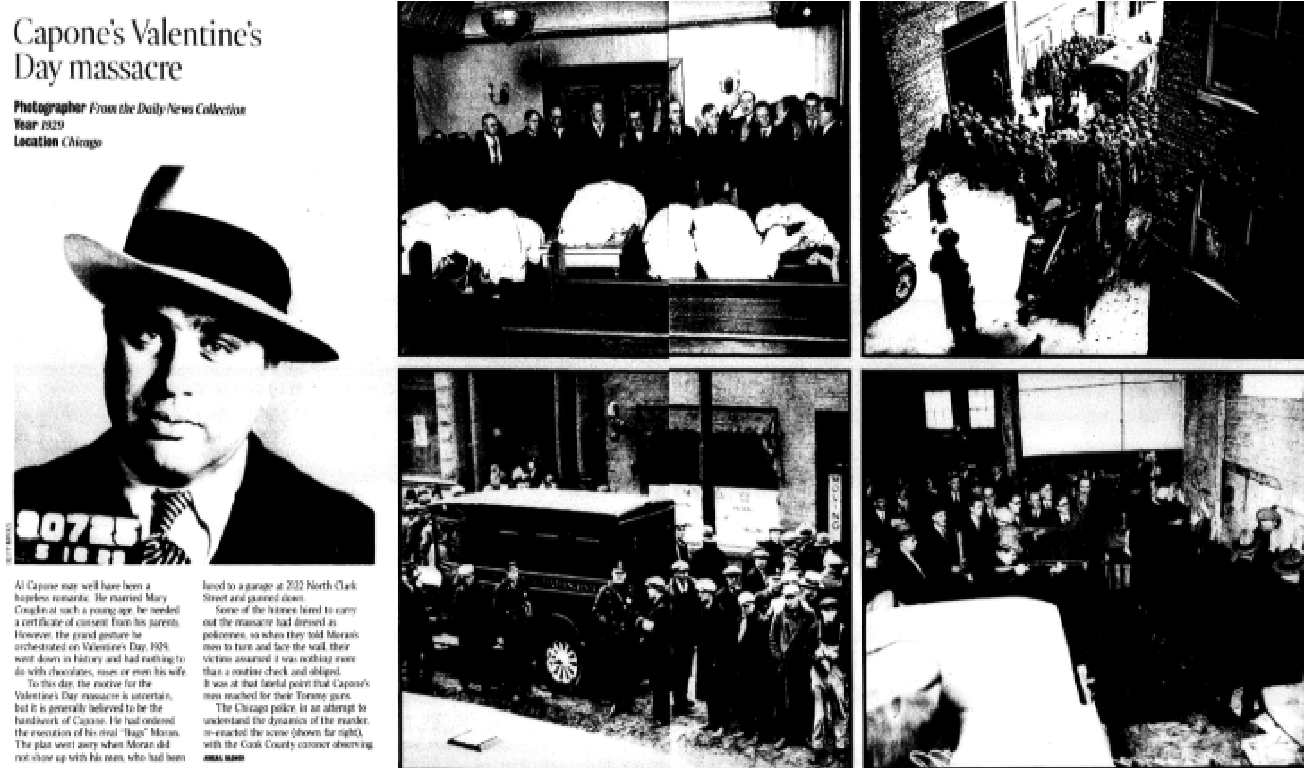By Emily Priest, Gale Ambassador at the University of Portsmouth
Valentine’s Day is generally known for chocolate, cards and big fluffy hearts, but 90 years ago today the colour red wasn’t for love but blood. In Chicago in 1929, seven members of the Chicago North Side Gang were ambushed, lined up against a wall, then shot in cold blood. Who was responsible? None other than the notorious crime lord Al Capone.
The massacre hit headlines and has since been adapted and referenced in pop culture with films such as Scarface (1932) and The Untouchables (1987). I remember the first time I heard of it, back at school studying GCSE history. We only covered the massacre briefly, between lessons on prohibition and the roaring 20s culture, but it always stuck with me. The meaning of Valentine’s had changed for me and its associations are now rather darker.
I grew a morbid curiosity for the event and wanted to know more than the few facts I had learnt. I began to research more about it, but it wasn’t until I started using Gale Primary Sources that I felt I really understood the truth about the Valentine’s Day Massacre. The Gale databases, filled with a wealth of primary resources, show more than just dates but names of real people, historical images and other related incidents. Articles found in databases such as The Times Digital Archive present the real history behind this massacre.
One article tells how Al Capone’s men caught the gang off guard, by dressing as policemen pretending to do a routine check, even discussing police proceedings. ‘The Chicago Police, in an attempt to understand the dynamics of the murder, re-enacted the scene’ – perhaps if they put themselves in the shoes of those that were there that day, they could pin it down to, and catch, Capone. Another short piece in the Daily Mail Historical Archive unveiled more information on the assailants and named one as Fred Burke, who was identified by the guns found in his home. It is also interesting to see different opinions on the topic and how the public at the time reacted to such horror.
Reading primary texts like this brings life to the past and makes these events seem more visceral and captivating. I can watch history unravel before my eyes, even when it has already been and gone. It’s the academic equivalent of looking up to the stars and watching them sparkle, even if they have died thousands of years ago.
What is perhaps even more interesting is seeing how history has developed since, as well as finding and researching other examples of a ‘Valentine’s Day massacre’. It seems as if pop culture is not the only thing inspired by Al Capone’s handiwork…

In 1968, a shooting of two London scrap-metal merchants was said to be ‘similar to the St. Valentine’s Day Massacre’ and on the 14th February, 1978 three workmen had an argument in a shed which resulted in the death of all three. Apparently, ‘one returned…with a gun, killed his friends and turned the weapon on himself’. Their bodies were found the next day by a fourth workman. In 2008, 80 years on from the first Valentine’s Day massacre, another shooting took place in America. In this massacre a shooter dressed in black ‘sprayed bullets’ in a lecture hall in Illinois University, killing five people and injuring 13, before killing himself.

The gruesome stories go on and on, and it doesn’t take long for you to see Valentine’s Day in a very different light. If you look past the flashy advertisements and love hearts, you can soon find a dark and seedy history to the day of love. Maybe this year turn away from that box of chocolates to Gale’s resources and indulge your morbid curiosity. Red, after all, is the colour of both love and blood.
Blog post cover image citation: Abigail Radnor. “Capone’s Valentine’s Day massacre.” Times, 11 Feb. 2012, p. 16[S4]-[17][S4]. The Times Digital Archive, http://tinyurl.galegroup.com/tinyurl/8tF8Q4.

